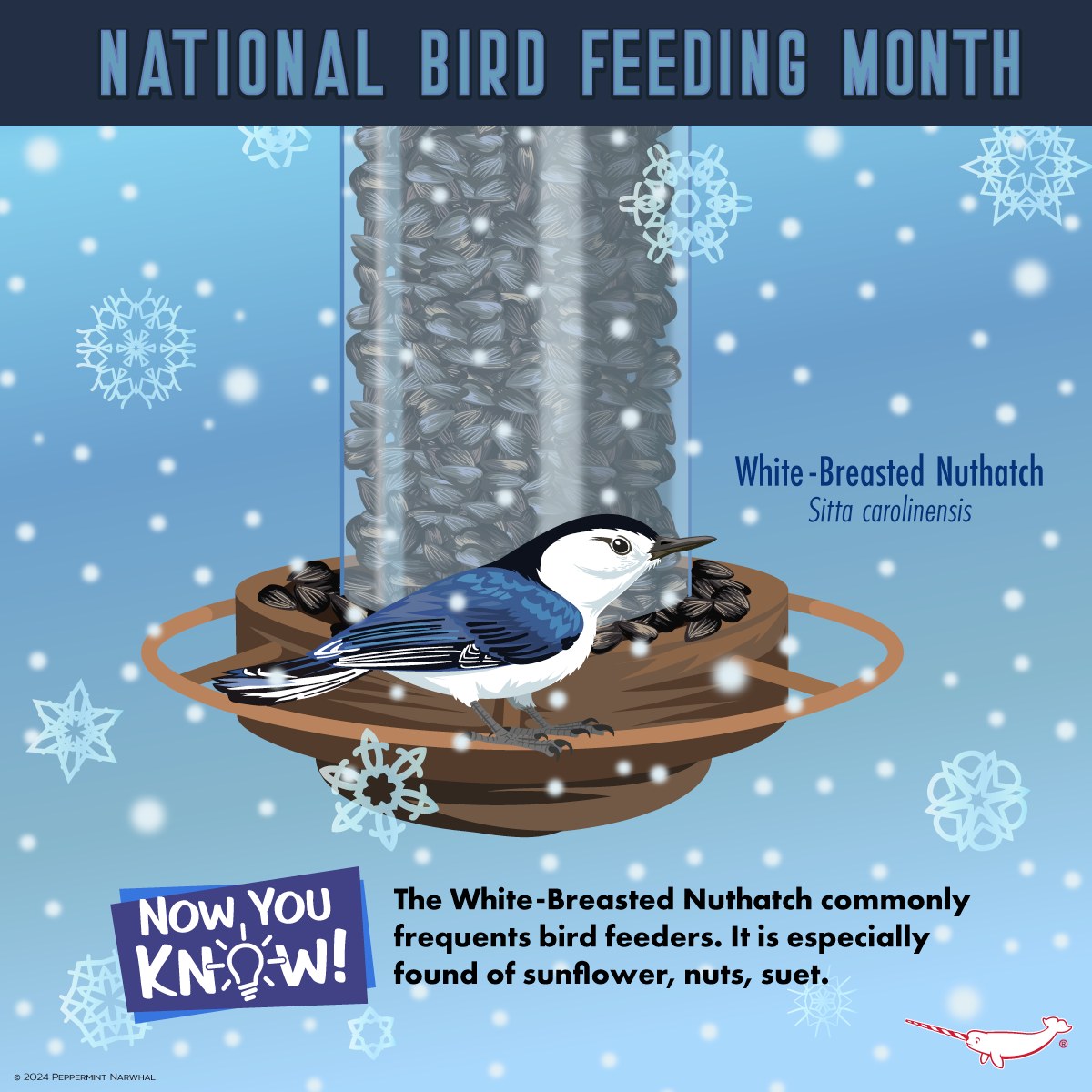– The significance of National Bird Feeding Month in promoting avian health and biodiversity
– Overview of White-Breasted Nuthatch habitat preferences and dietary needs
– Tips for setting up bird feeders to attract various species during February
– Understanding the importance of responsible bird-feeding practices for wildlife conservation
– How participating in bird-feeding activities contributes to scientific research and environmental awareness
February is a critical period in the avian calendar, marking a time when natural food sources are scarce in many parts of North America. National Bird Feeding Month addresses this gap, encouraging people to supplement birds‘ diets with feeders. This initiative is about supporting bird populations through the harsh winter months and engaging communities in wildlife conservation and environmental stewardship.
One bird species that benefits significantly from bird feeders is the White-Breasted Nuthatch (Sitta carolinensis). This small, agile bird is known for its preference for sunflower seeds, nuts, and suet, making it a frequent visitor to backyard feeders. The White-Breasted Nuthatch, characterized by its white underparts, blue-gray upperparts, and a distinctive black cap, is found across much of the United States. Understanding the specific dietary preferences and habitat requirements of such species is crucial for those interested in supporting their local bird populations.
When setting up bird feeders, variety is key to attracting different species. Feeders should be placed at different heights and filled with various food types, including seeds, nuts, and fruits, to cater to various dietary needs. Additionally, the location plays a significant role in the safety and accessibility of the feeder to birds. Installing feeders near natural shelters like bushes or trees can provide birds with quick escape routes from predators while ensuring the feeders are visible to birds flying overhead.
Responsible bird-feeding practices are paramount. Poorly maintained feeders can spread diseases among bird populations and attract unwanted pests. Regular cleaning of feeders with bleach and water can prevent the buildup of harmful pathogens. Furthermore, selecting high-quality, appropriate food reduces waste and ensures the birds’ nutritional needs are met.
Engaging in National Bird Feeding Month offers more than just the opportunity to support local wildlife; it allows individuals to contribute to citizen science projects and conservation research. Organizations and researchers often rely on data collected by amateur birdwatchers to track bird populations, migration patterns, and the impacts of climate change on avian species. By participating, individuals gain a deeper understanding of local biodiversity and the ecological challenges faced by bird populations.
National Bird Feeding Month serves as a reminder of the intricate relationships between humans and nature. It prompts individuals to take active roles in wildlife conservation, fostering a connection with local ecosystems. When done correctly, the act of bird feeding can significantly impact the survival and health of bird populations, contributing to the broader goals of biodiversity preservation and environmental education. Through initiatives like National Bird Feeding Month, communities can create sanctuaries for birds, encouraging a harmonious coexistence with our feathered friends and enriching our environmental heritage.
*****
Source Description
February is National Bird Feeding Month
Now You Know! – The White-Breasted Nuthatch (Sitta carolinensis) commonly frequents bird feeders. It is especially found in sunflower, nuts, and suet.
FINAL DAYS TO PLEDGE!!!!
–
NEW collectible enamel pin series featuring the world’s only egg-laying mammals, the monotremes, including the platypus and the echidnas.
Pledge Now! – https://rb.gy/0lw7he
Search “Monotremes” or “Peppermint Narwhal” on Kickstarter.
Campaign ends Feb. 4, 2024.
Shop www.peppermintnarwhal.com


